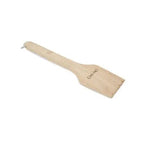DCS 30″ Insulated Jacket — Frequently Asked Questions
What is the DCS 30″ Insulated Jacket?
The DCS 30″ Insulated Jacket (model BGB30-IJS) is a stainless steel liner built to allow safe installation of a 30″ DCS grill (including many Series 7 and Liberty models) into an outdoor island constructed with combustible materials. It serves as a heat barrier to protect the surrounding enclosure.
What are its specifications and dimensions?
• Material: 304 stainless steel construction for durability and weather resistance.
• Outer / unit dimensions: width ~ 34.18″, height ~ 11.13″, depth ~ 23.75″.
• Cut-out (island opening) size: ~ 34 7⁄8″ (W) × 11 1⁄8″ (H) × 23 3⁄4″ (D).
• Weight: around **75 lb** (unit weight) per listing
• Intended use: for combustible island installation; requires bottom support.
How do I install and use this insulated jacket?
1. Construct your outdoor kitchen island or enclosure with a matching cut-out dimension (~ 34 7⁄8″ × 11 1⁄8″ × 23 3⁄4″).
2. Provide a solid bottom shelf or structural support inside the enclosure, as the insulated jacket must rest on proper support—not rely solely on framing.
3. Slide or insert the jacket into the cut-out so that its front face is flush with the island’s exterior.
4. Place the 30″ DCS grill head inside the jacket, ensuring proper clearance, alignment, and ventilation per DCS guidelines.
5. Finalize the island’s façade, ensuring any trim or finishes are flush or aligned with the jacket edges.
6. Always follow DCS’s specified clearances, venting and safety instructions to maintain warranty and safety compliance.
What are the advantages and what should I watch out for?
Advantages:
• Enables mounting a DCS 30″ grill in an island with combustible construction by providing a tested thermal barrier.
• Stainless steel construction ensures a clean, premium look that matches the grill’s finish.
• The jacket is engineered specifically by DCS to maintain compatibility and safe installation.
Cautions / limitations:
• Must have bottom support — neglecting that can lead to sagging or structural failure.
• The dimensions and cut-out tolerances must be precise — misalignment can affect clearances or aesthetics.
• Stainless steel exposed to the elements may show surface staining, minor discoloration, or oxidation over time.
• Installation outside DCS-approved configurations or deviating from guidelines may void warranty or reduce safety.

